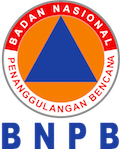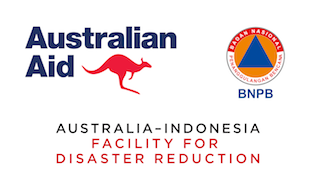Preface¶
Disclaimer¶
This document is initial draft and still in reviewing phase by these parties:
Badan Nasional Penanggulangan Bencana (BNPB)
Australia-Indonesia Facility for Disaster Reduction (AIFDR-Australian Government)
Humanitarian OpenStreetMap Team (HOT)
All contents and materials on this document may be changed without public notice.
Licence¶

All contents and materials in this document are licensed as Creative Commons Attribution Australia (CCbyA).
You are free:
to copy, distribute, display, and perform the work
to make derivative works
to make commercial use of the work
You must give the original author credit.
More information about CCbyA License: http://creativecommons.org/licenses/by/3.0/au/deed.en_GB
About Us¶
Badan Nasional Penanggulangan Bencana (BNPB)¶

BNPB is Indonesia’s National Disaster Management Agency. BNPB is a non-departmental ministerial-level government agency, tasked with providing guidance and direction to the efforts of disaster management that includes disaster prevention, emergency response, rehabilitation and reconstruction in a fair and equal way. BNPB functions as a policy maker regarding refugee/IDP management for effective and efficient response. It coordinates the implementation of disaster management activities in a planned, integrated and comprehensive way.
Australia-Indonesia Facility for Disaster Reduction (AIFDR)¶

The Australia-Indonesia Facility for Disaster Reduction (AIFDR) is a joint initiative between the governments of Australia and Indonesia. They work to strengthen Indonesia’s ability to reduce the impact of disasters. The Australian and Indonesian governments at a special ceremony on 15 July 2010 launched the Australia-Indonesia facility. The launch marks an important event in the strong relationship now shared by both countries and their united commitment to better prepare for and respond to natural disasters in Indonesia.
Humanitarian OpenStreetMap Team (HOT)¶

Free, collaborative maps are uniquely valuable to humanitarian work, especially in places where base map data is often scarce, out-of-date, or rapidly changing. OpenStreetMap (OSM) is a web project to create a free and open map of the entire world, built entirely by volunteers surveying with GPS, digitising aerial imagery, and collecting and liberating existing public sources of geographic data. The Humanitarian OpenStreetMap Team (HOT) is an initiative to apply the principles and activities of open source and open data sharing towards humanitarian response and economic development.
Preface¶
Every day thousands of people contribute to OSM, a project with the lofty goal of mapping the world. Most OSM software is free and open source, and the data is open for anyone to use. The idea is simple: if you make a map of your town and we make a map of ours, we can share those maps on a common platform. With enough people contributing, we can collect data throughout the world.
Collecting Spatial Data using OpenStreetMap is a step-by-step course designed to help anyone get started with OSM. While it might seem daunting at first, OSM is simple enough that anyone can get started creating maps, and as your understanding grows you’ll find that you can do more and more interesting things.
This tutorial makes few assumptions. It assumes you have used a computer before, and that you have an email address. If you don’t have an email address, we suggest you have a friend help you sign up for one. There are many websites where you can get a free email address, such as www.gmail.com or mail.yahoo.com.
The only other assumption is that you’ve used the internet before. Perhaps you’re familiar with Facebook or email, and that’s certainly enough to get started with OSM. If you’re already comfortable using a computer and surfing the web, don’t worry – this guide is for you too. No matter your proficiency, we’ll take you step-by-step through OSM and you’ll be mapping in no time!